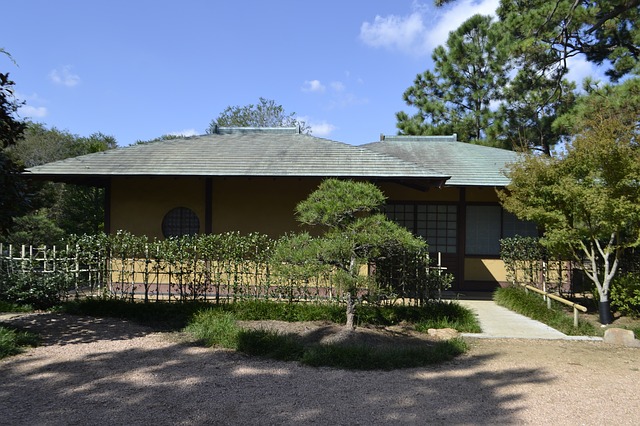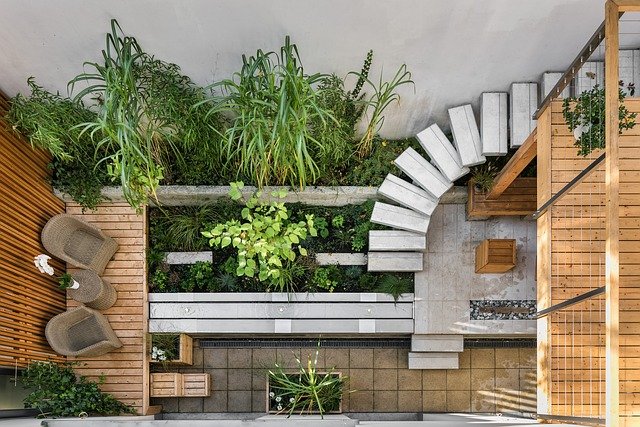What is an Ornamentation in Landscaping?

Ornamentation is the decoration of a building, or other object. Ornamentation can be applied to both exterior and interior design. Ornamentation is an important part of any design because it can make a space feel more homey and comfortable to the person living in it.
Ornamentation can be used for an outside design to create a beautiful landscape. Ornamentation is used in landscaping options and involves the removal of vegetation to make room for flowers, rocks, or other plant materials.
Planting can also be done with ornamentations that add shapes into the landscape design. . Ornamentations can be used in indoor design as well and include wood, metal, glass, and more.
Ornamentation is a design element that can add an aesthetic quality to a space. Ornamentations can be used in interior design as well and include wood, metal, glass, and more.
The use of ornamentation in interior design has been around for centuries. It was popularized during the Baroque era when designers began to incorporate it into their designs. Ornamentations are often used as decorative elements on walls and ceilings, but they are also used in furniture and other pieces of home décor.
The Importance of Ornamentation and What it Really Is

Ornamentation is an important part of design and is used to break up the monotony of a design. It can be used in many different ways, such as in the use of color or in the use of shapes.
Ornamentation is not just about adding more elements to a design. It is about adding something that will make it more appealing and readable.
In the design of a logo, ornamentation should help to break the shape and make it more readable. It is not merely about adding detail. The color choice could also be an important part of the design, meaning that color should play a role in how ornaments are used.
Color is often used for ornamentation purposes and can make designs more attractive or readable.
Color can be used in the design of a logo to create a certain mood or setting. Colors may include red, yellow, blue and green. Different colors can also be used to create the appearance of depth and weight.
Colors are an important part of the design process because they provide different visuals that help make designs more appealing or readable.
A symbol is an object that represents an idea or concept. It may be created in paper, textiles, photography, architecture or any other form of visual media.
Symbols are an important part of the design process because they provide different visuals that help make designs more appealing or readable. A pattern is a repeated visual image within a single work of art, such as a painting, textile design
Types of Ornamentations in Landscaping

Ornamentations in the lawn and garden are not just for aesthetics.
They can also be functional. Some ornamentations, such as a bird bath or a fountain, are used to attract wildlife. Others, such as an outdoor sculpture or a bench, provide seating for people who want to enjoy the outdoors.
A bird bath is a container that holds water for birds to drink and bathe. The most common type of bird baths are made of ceramic or porcelain. Birdbaths with waterway features, such as swans, turtles, or frogs on top can also attract wildlife that like to watch prey swim by them.
A fountain is a decorative architectural feature where a jet of water shoots up into the air. They are often seen in gardens, parks and town squares. The fountain may have several jets spraying water, or it may be only one. Fountains are traditionally made of stone or metal but can also be made from concrete, plaster or fiberglass.
There are many ornamentation types that can be used in landscaping.
Some of these are:
– Trees and shrubs
– Flowers and herbs
– Statues or fountains
– Ponds and water features
– Lighting fixtures such as outdoor lighting, solar lights- Birdbaths and feedersTrees and shrubs provide many benefits for landscaping.
Some of these are:- Provide shade from the sun which increases the temperature inside your home in summer months without having to use air conditioning.
– They also help retain moisture in dry climates which can reduce the need for watering.
– They provide privacy and protection from the wind, rain, or snow. Just like your home, trees and shrubs can be decorative in winter.
– Trees and shrubs provide natural filtration systems which help clean the air around your home- Natural fertilization systems
– They are a potential source of food for wildlife such as birds, deer, squirrels, insects
What is the Purpose of Ornamentation in Landscaping?

Ornamentation in landscaping is a way to add beauty and character to your space. Homeowners can choose from a variety of different types of ornamentation to make their space unique.
Ornamental landscaping is not just about aesthetics, it also has a functional purpose. Ornamental plants, for example, provide privacy and shade while adding beauty to the space. .Some types of ornamentation include:- Container plants (such as succulents or hanging baskets)- Rock or stone pathways- Lawns and turf grasses- Pedestal planters – Ground cloth (a clean and flat surface to walk on.- The installation of a wooden walkway .
The most functional types of ornamentation are those that provide scenic views. Because these designs require more work, they tend to be more expensive. Examples of these include:- Fountain- Water features- Statuary and sculptures – Seating areas- Fountains for water features.
Types of Outdoor Ornamentation – Fountains- Statuary and sculptures- Tree planting- Wall murals and paintings
FountainStatuary and Sculpture Tree PlantingOrnamental landscaping is not just about aesthetics, it also has a functional purpose.
Ornamental plants, for example, provide privacy and shade while adding beauty to the space. .Some types of ornamentation include:-
Container plants (such as succulents or hanging baskets)
– Rock or stone pathways
– Lawns and turf grasses
– Pedest al and urns
– Ornaments that are positioned on patios and walkways
– Naturally flowing water features
– Fountains
– Statuary
How to Plant an Ornament Garden for Your Home and Why You Should Care

Ornamental gardens are a great way to spruce up your home and make it more welcoming.
You can plant an ornamental garden for your home in many ways. You can use a small space like the front porch, or you can use a large backyard. Regardless of what size of space you have, there are some basic steps that you should follow when planting an ornamental garden.
You should start by choosing a location for the garden and deciding on what type of plants you want to grow there. It is important to choose plants that will thrive in the environment that they are going into so take the time to research which plants will be best for your space before planting them.
1)Choose a location for your garden.
You should have enough space to walk around in and have plenty of sunlight.
It’s best to plant the garden in full sun so that the plants can receive maximum amounts of light.
If you are planting it in partial shade, make sure there is plenty of vegetation nearby that will protect the plants from being scorched by the sun
2) Dig a small trench where you want the garden to be. You will need an area that is about 20 square feet.
Fill up the bottom of the trench with organic matter such as compost, well-rotted manure or leaves. The organic matter should be well-composted and have plenty of microorganisms in it to encourage the growth of good bacteria and fungi.
Dig out the trench up to a depth of 4 feet. The deeper you dig, the better the soil will hold moisture and nutrients in it. Leave an inch of soil at the bottom of your hole in case you want to add another layer later on.
3) Place one layer of compost over top of the dirt in your trench and lightly tamp it down with your foot.
4) Repeat the process for each layer of soil you add in.
5) Once you reach a depth of 4 feet, fill the trench back up with topsoil that has been mixed with compost and organic fertilizer.
6) Place a wire mesh cover over the garden area to keep critters out while it finishes incubating.
Steps to make a compost bin:
1 Collect the materials needed to make your bin: A large plastic storage bin or soil mixed with compost and organic fertilizer.
2 Place one layer of newspaper in your bin, then add in the wet materials and fill up the rest of the way with dry materials.
3 Cover your newspaper with old leaves or straw.
4 Add water and stir it so that the paper can absorb the liquid.
5 Add more water to keep the moisture level up, if needed.
6 Place a wire mesh cover over the garden area to keep critters out while it finishes incubating.
.7 After about two weeks, you can remove the wire mesh cover and water the garden. Recycling your old newspaper is a great way to turn it back into something that can be used again and again.
If you do not care for the soil very much, follow step 5 by adding peat moss or sawdust to create a more nutrient rich environment for your plants. If you are trying to grow more fruit, potatoes, and other root vegetables in your garden, add soil amendments like compost or aged manure. to your garden to allow for greater root growth. For the first time, you may want to fertilize your plants with a basic fertilizer (like blood meal) during the growing season.
Conclusion – Find out more about ornamental plants and horticulture https://romanieolandscapes.com/ can improve your home’s curb appeal.
.
